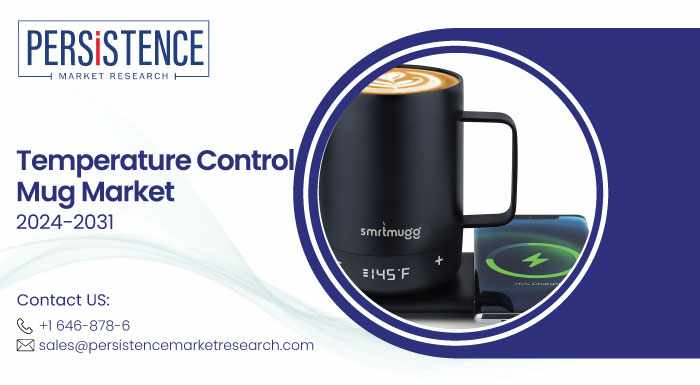
The European market for wasabi is experiencing a significant shift, with wasabi paste and processed wasabi becoming increasingly popular among consumers. As the interest in Japanese cuisine continues to rise, these convenient and affordable alternatives to fresh wasabi are gaining traction. From its use in sushi restaurants to its growing presence in grocery stores and home kitchens, processed wasabi is now a staple ingredient in European culinary trends. Here’s a closer look at the factors driving the rising demand for wasabi paste and processed wasabi in Europe.
Read More: https://www.persistencemarketresearch.com/market-research/europe-wasabi-market.asp
1. Convenience and Accessibility of Processed Wasabi
One of the key factors contributing to the growing demand for wasabi paste and processed wasabi in Europe is the convenience these products offer. While fresh wasabi is rare and expensive, processed versions provide an accessible and affordable alternative for consumers who want to enjoy the distinct flavor of wasabi without the hassle of sourcing fresh roots.
Ready-to-Use: Wasabi paste, made by mixing wasabi powder with water, vinegar, and other ingredients, is incredibly easy to use. It requires no preparation beyond opening the tube or jar and is perfect for adding to sushi, dipping sauces, and dressings. This convenience makes wasabi paste an attractive option for both home cooks and professionals in the foodservice industry.
Long Shelf Life: Processed wasabi products also offer a long shelf life, making them ideal for home kitchens where fresh ingredients may not be readily available. Unlike fresh wasabi, which loses its pungency after a few hours, processed wasabi maintains its flavor and can be stored for longer periods, making it a practical choice for consumers.
As demand for convenience and time-saving food options increases, processed wasabi is emerging as a go-to ingredient for many Europeans looking to incorporate wasabi into their dishes.
2. Growing Popularity of Sushi and Japanese Cuisine
The rise in the popularity of sushi and other Japanese dishes across Europe has had a direct impact on the demand for wasabi products, especially wasabi paste. Sushi, once considered an exotic dish, has become a mainstream food choice in many European countries, and as more people experiment with Japanese cuisine, the need for wasabi as a key component grows.
Sushi Culture in Europe: Sushi consumption in Europe is on the rise, not only in high-end restaurants but also in supermarkets and fast-casual dining establishments. Wasabi, a traditional accompaniment to sushi, has become an essential element in the European sushi experience. Wasabi paste provides an easy way for both restaurants and consumers to enjoy authentic flavors without the need for fresh wasabi roots.
Wider Culinary Use: Wasabi paste is no longer limited to sushi. It is increasingly being incorporated into a wide variety of dishes, including dips, dressings, marinades, and even snacks. As European consumers become more adventurous in their culinary choices, processed wasabi has found its way into fusion dishes, further driving its demand.
As Japanese cuisine becomes a staple in European food culture, processed wasabi’s versatility and ease of use make it a sought-after ingredient in both traditional and fusion recipes.
3. Cost-Effectiveness of Processed Wasabi
Authentic, fresh wasabi (Wasabia japonica) is notoriously expensive due to the labor-intensive cultivation process and its limited availability outside of Japan. In contrast, processed wasabi products such as wasabi paste offer a more affordable option for consumers and businesses alike.
Affordable Alternatives: While fresh wasabi can cost significantly more, particularly in European markets where it is imported, processed wasabi offers a cost-effective alternative. Many processed wasabi products are made using horseradish, mustard, and other ingredients that mimic the heat and flavor of real wasabi at a fraction of the price.
Widespread Availability: Processed wasabi, whether in paste or powder form, is widely available in supermarkets, specialty food stores, and online platforms across Europe. This increased availability, combined with the affordability of processed options, makes it an attractive choice for a wide range of consumers.
As price sensitivity continues to shape consumer choices, processed wasabi products have become a popular and practical solution, enabling more people to enjoy wasabi’s unique flavor without breaking the bank.
4. Health and Wellness Appeal of Wasabi
Processed wasabi, like fresh wasabi, is often praised for its health benefits, which further contribute to its rising popularity in Europe. Wasabi is known for its antimicrobial, anti-inflammatory, and detoxifying properties, making it an attractive addition to the health-conscious European diet.
Digestive Health: Wasabi contains compounds known as isothiocyanates, which are believed to support healthy digestion and aid in breaking down food more effectively. As more consumers seek functional foods that contribute to overall wellness, wasabi’s digestive benefits are driving its incorporation into everyday meals.
Antioxidant Properties: Wasabi is rich in antioxidants, which help protect the body from oxidative stress and may have anti-aging properties. As Europeans become more health-conscious and aware of the importance of antioxidants, processed wasabi is being included in diets as a flavorful and functional ingredient.
The growing demand for foods that offer both flavor and health benefits is playing a pivotal role in boosting the popularity of processed wasabi across Europe.
5. Increase in Wasabi-Inspired Products
Another driver of the demand for processed wasabi is the rise of wasabi-flavored products in European markets. These products range from snacks to condiments, offering new ways for consumers to enjoy the spicy, pungent taste of wasabi.
Wasabi Snacks: From wasabi-flavored chips and crackers to popcorn and even chocolate, wasabi is increasingly being used as a flavoring in snack foods. These products cater to consumers looking for bold, spicy flavors and are contributing to the growing consumption of processed wasabi.
Innovative Condiments: Wasabi paste is also being used in a variety of condiments, such as wasabi mayo, wasabi mustard, and wasabi ketchup, providing consumers with new ways to enjoy the wasabi flavor in everyday meals. The incorporation of wasabi into fusion products has further increased its presence in European kitchens.
As innovation in food products continues to grow, the demand for processed wasabi is expected to expand, particularly in the snacking and condiment sectors.
Conclusion
The European market for wasabi is undergoing a transformation, driven by the rising popularity of sushi and Japanese cuisine, the convenience of processed wasabi, and the increasing consumer interest in health-conscious ingredients. Wasabi paste and processed wasabi products are becoming mainstream as Europeans embrace the bold, spicy flavor of this iconic Japanese ingredient. With increased accessibility, affordability, and health benefits, processed wasabi is poised to continue its growth, becoming a staple in European kitchens, restaurants, and snack aisles for years to come.




















Write a comment ...